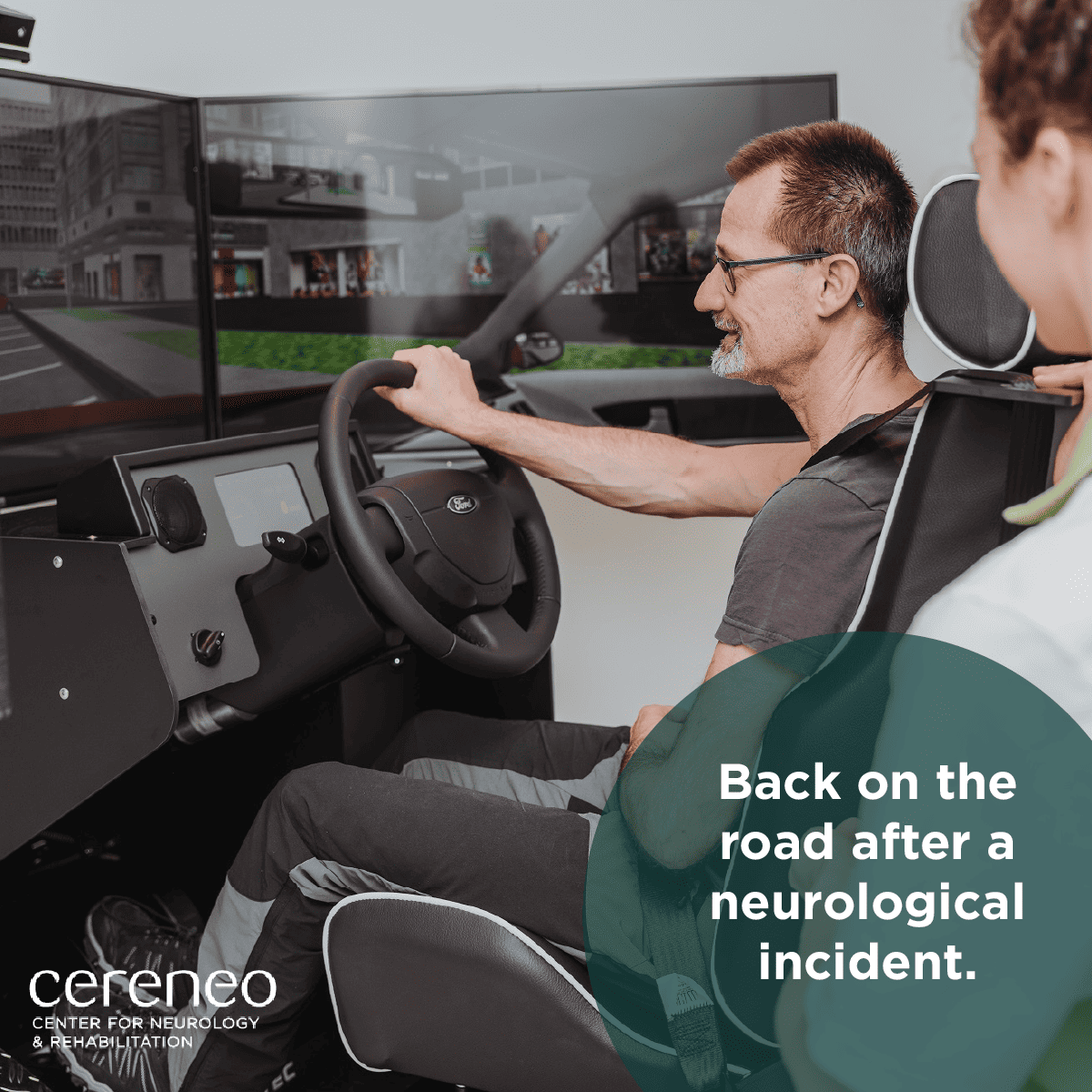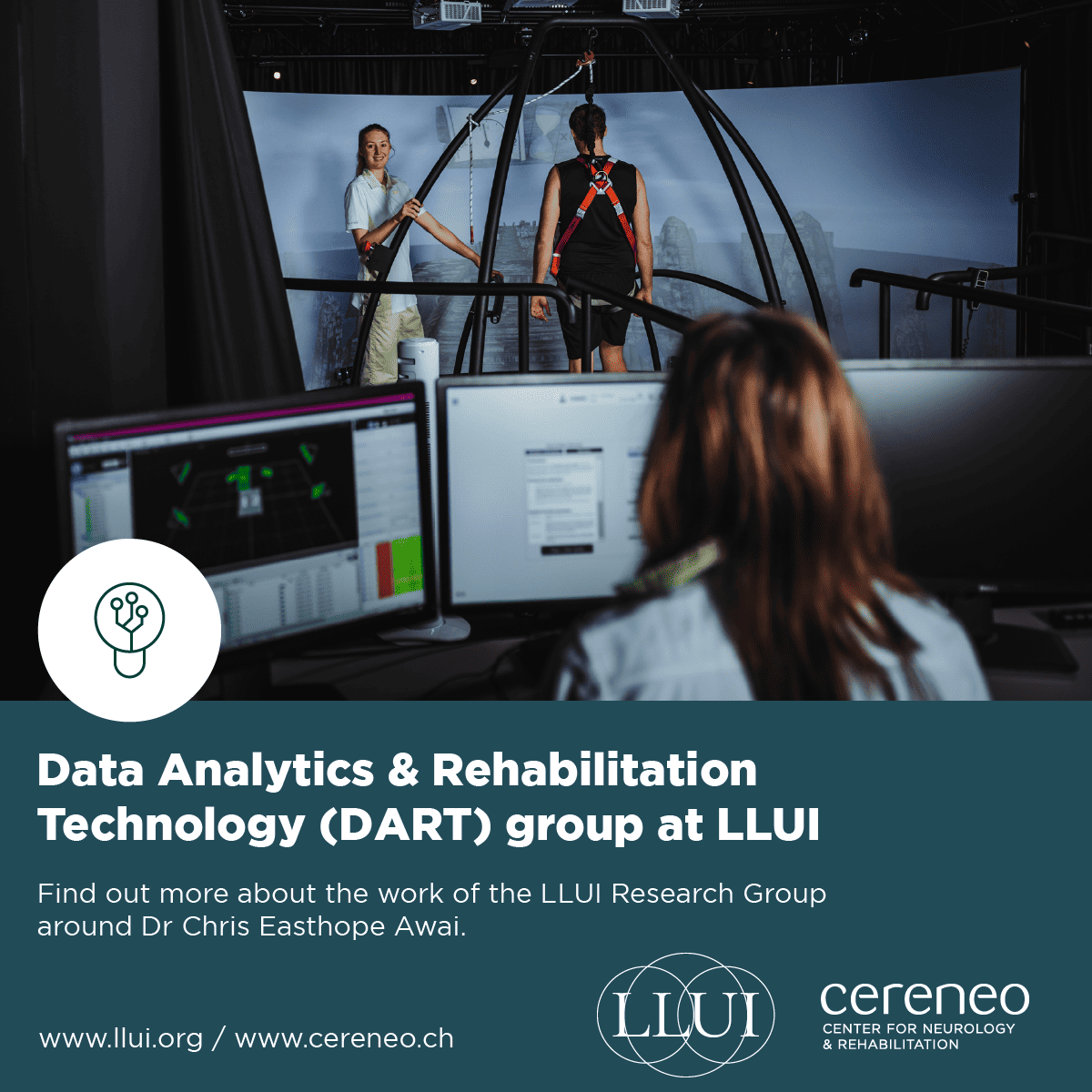Neurological incidents, such as a traumatic brain injury or stroke, can lead to cognitive impairments.
Our neuropsychologists work with our patients to restore and improve these functions (see also our blog post on neuropsychology: From the clinic: Training the brain to improve cognition – cereneo).
Cognitive functions include for example attention, visual perception, reaction time and decision-making – all of which are essential for everyday life and, in particular, safe driving.
Driving with cognitive impairment
For people with cognitive impairments, it is not advisable or permitted to drive. This is a significant restriction on their mobility and can be very difficult in everyday life for them and lead to decreased quality of life.
In neuropsychology, we use targeted cognitive training to help our patients restore, improve and maintain these functions so that they can safely drive again. In addition to a variety of therapeutic approaches, we also use robotics such as driving simulators.
“Being able to drive again after a stroke or brain injury is an important goal for many of our patients. Being able to drive means regaining an important part of their professional and social life. Thanks to the driving simulator, we have been able to make an important contribution to the rehabilitation of the cognitive functions required for safe driving. The repetition of exercises is central to the recovery of cognitive functions. Training on a driving simulator is very realistic and close to everyday life and helps many patients to maintain motivation during repetitive training,” says Lucia Bronner, neuropsychologist at cereneo.
How does a driving simulator work?
A driving simulator looks like a computer game that mimics the driving experience through a combination of realistic controls with a steering wheel, pedals and visual displays, simulating various traffic situations. This provides the patient with the most realistic driving environment possible.
The aim is to train a wide range of driving situations, such as the ability to react to a pedestrian suddenly crossing the road or concentration at changing traffic lights.
Aim of the driving simulator
The aim of this therapy is to enable patients to drive under realistic conditions, so that they can gain experience without endangering themselves or others.
The focus is on improving the cognitive and motor skills required for safe driving and preparing patients for the driving test. This includes recognizing traffic situations, making decisions under time pressure and maneuvering the vehicle in different conditions. Through regular training in the simulator, patients can gradually improve their cognitive functions until they are ready for a fitness to drive test.









